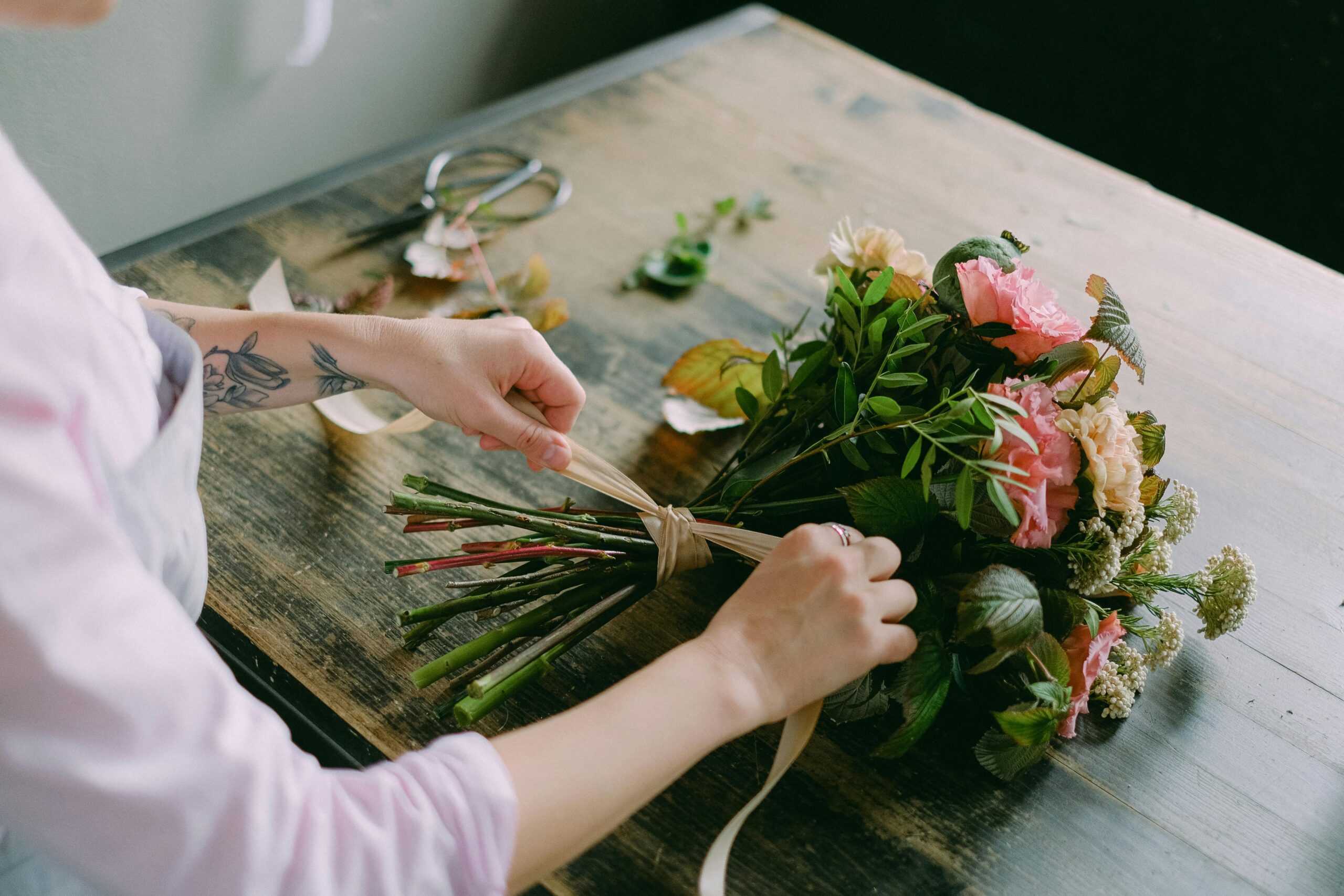Imagine receiving a bouquet of fresh flowers, the petals glistening in soft sunlight. As you reach out, your fingers brush against a delicate ribbon, perfectly tied around the stems. Instantly, the flowers feel more than a gift—they feel like a story, a moment of care, a touch of grace. This is the magic of the ribbon in bouquet wrapping.
Aesthetic Harmony: Turning Flowers into Art
Ribbons are the bridge between flowers and their presentation. They frame the bouquet, guiding the eye and accentuating colors, textures, and shapes. A soft satin ribbon can enhance the romantic allure of roses, while a rustic linen ribbon adds charm to wildflower arrangements. Even the simplest bow can turn a bunch of stems into a visually harmonious piece of art.
Designers often layer ribbons of different textures, widths, or subtle patterns to create depth and movement. This layering not only elevates the bouquet visually but also invites tactile interaction—touching the ribbon becomes part of experiencing the gift itself.
Emotional Resonance: More Than Decoration
A ribbon communicates emotions that words sometimes cannot. The careful selection and tying of a ribbon show thoughtfulness and intentionality. A hand-tied ribbon suggests intimacy and personal touch; a cascading bow can reflect joy and celebration.
In many cultures, colors of ribbons carry symbolic meanings: red for passion, pastel for gentleness, white for purity. This nuanced language allows florists to imbue their bouquets with emotion, turning floral arrangements into silent messengers of love, gratitude, or celebration.
Trend-Forward Designs: Creativity in Motion
The art of ribbon in bouquet wrapping evolves with trends. Eco-conscious choices, such as jute, cotton, or linen ribbons, combine sustainability with elegance. Social media trends encourage florists to experiment with asymmetrical bows, cascading ribbons, and even custom-printed designs that share a personal message or brand identity.
Imagine a minimalist bouquet wrapped in recycled paper, finished with a soft sage linen ribbon—a perfect blend of contemporary aesthetics and environmental awareness. These thoughtful touches make the gift memorable, shareable, and emotionally resonant.
Practical Tips: Choosing and Using Ribbons
When selecting a ribbon, consider not just color and texture but also proportion and function. Wider ribbons can balance tall or dense bouquets, while narrower ribbons suit delicate stems. Materials like satin offer sheen and elegance, while grosgrain or velvet give structure and tactile interest.
Securing techniques also matter. Classic hand-tied bows remain popular for their charm, but florists may use wired ribbons for durability or adhesive options for complex arrangements. Pairing ribbons with charms, beads, or dried flowers can amplify the emotional and visual impact.
Bringing It All Together
The ribbon is the final flourish that transforms a bouquet into a story. It connects the giver and recipient, the flowers and the sentiment, the present moment and lasting memory. For inspiration, florists can explore platforms like Floret Flower to see innovative ribbon styling, or link internally to complementary products like your flower bouquet wrapping paper collection to enhance the overall experience.
Every choice—from texture to color, from bow style to ribbon length—creates a unique expression. In essence, the ribbon in bouquet wrapping is not just decoration; it is an invitation to feel, appreciate, and celebrate the art of gifting.
Conclusion
From weddings to birthdays, anniversaries to casual gestures of affection, ribbons elevate bouquets into unforgettable gifts. They provide aesthetic beauty, emotional depth, and cultural symbolism, allowing florists and gift-givers to create meaningful connections. By mastering the use of ribbons in bouquet wrapping, every floral arrangement becomes more than a gift—it becomes a story, a touch of grace, and a lasting impression.

